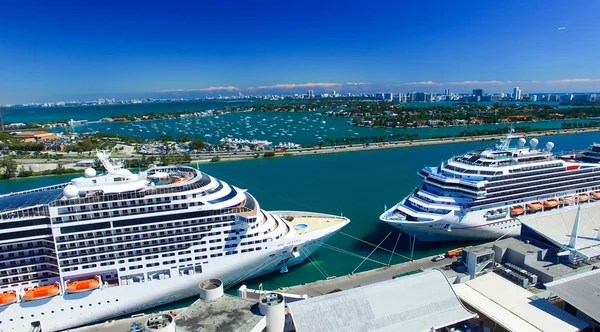
What good is a well-stocked bunker if the city above it ceases to exist within seconds? In the event of an all-out nuclear exchange, even the best-prepared communities might easily turn out to be doomed-not through want of courage or planning, but owing simply to their geography and strategic importance, making them inevitable targets. For years, defense analysts have issued grave warnings that at least some American cities would disappear in the first few minutes of such a war, taking with them the regional populations that anchor national systems.
Recent evaluations, reinforced by open-source targeting studies and historical war game simulations, draw a dire picture: capitals of finance, hubs of military command, and centers of industrial output would be vaporized before evacuations could even commence. The destruction would ripple far beyond blast zones, dismantling energy grids, severing communications, and fracturing the nation’s ability to respond. Here are the cities experts say have virtually no chance of survival.

1. Washington D.C. The First Strike Priority
No city carries greater symbolic and operational weight than the U.S. capital. Housing the White House, Pentagon, and national command authorities, it is ranked by the Federation of American Scientists as the top target in nuclear strike simulations. A direct hit would decapitate decision-making within seconds, erasing the nerve center of national defense. The surrounding urban belt Arlington, Alexandria, and parts of Maryland would be flattened by the same blast wave, leaving a radioactive void where the nation’s leadership once stood.

2. New York City Global Financial Heart
The Bulletin of the Atomic Scientists identifies New York as a guaranteed first-wave target due to its unmatched role in global finance, communications, and trade. The detonation’s firestorms would engulf Manhattan and the outer boroughs, while fallout would contaminate New Jersey and southern New England. Beyond the millions of immediate deaths, the destruction would paralyze markets, sever leadership channels, and plunge national and international communications into chaos.

3. Los Angeles and San Francisco: Pacific Powerhouses
RAND Corporation studies place both cities high on lists of nuclear targets because of their aerospace, naval, and technological importance. Los Angeles anchors the defense manufacturing base of the country, while San Francisco links America to the worldwide tech economy. A strike would ignite coastal firestorms and contaminate Pacific waters, crippling the military readiness of the West Coast while severing vital economic links with Asia.

4. Chicago and Detroit Industrial Heartland
From Chicago’s rail, finance, and aviation hubs to Detroit’s defense manufacturing and energy assets, the Midwest is integral to national logistics. Nuclear detonations here would spark chemical explosions and secondary fallout across hundreds of miles. The Great Lakes would become a toxic wasteland that would physically divide the nation’s surviving territories and rule out any coordinated recovery.

5. Houston and Dallas: Energy and Aerospace Targets
Texas’s energy dominance offers no refuge in nuclear war. Houston’s refineries and NASA’s Johnson Space Center, right alongside Dallas’ defense manufacturing, make them high-value targets. A blast would set off chain reactions throughout the oil and chemical complexes, casting toxic clouds over the Gulf and collapsing the national energy network overnight.

6. Seattle Naval and Aerospace Nexus
Puget Sound is home to Seattle, the U.S. Navy’s Pacific submarine base, and Boeing’s biggest defense operations. Analysts with the Center for Strategic and International Studies include it as the top West Coast military target not in California. Its destruction would wipe out the metro area, poison waterways and forests, and eliminate a key plank in Pacific defense.

7. Denver and Colorado Springs Command Complexes
Although Denver is inland, its proximity to NORAD and U.S. Space Command facilities makes it a sure target. Colorado Springs’ Cheyenne Mountain complex, designed to survive megaton blasts, would draw strikes intended to destroy underground command systems. High-yield detonations would crater mountain ranges and irradiate the interior heartland.

8. Atlanta and Charlotte: Southern Command, Finance
Atlanta’s role as the world’s busiest air hub and a telecommunications center combines with Charlotte’s banking and data infrastructure to make them essential for national continuity. Strikes would cut off the Southeast, sever communication, and ignite the petroleum and chemical depots, causing radiation to spread through the Appalachian corridor.

9. Tampa and Miami Coastal Command Zones
Tampa is home to U.S. Central Command, while Miami is a gateway to global trade. Their coastal geography offers no protection against the contamination of tidal zones from nuclear detonations, nor any stoppage of the spread of fallout inland. Ports would burn under radioactive clouds, erasing Florida’s military and commercial capacities.

10. Nationwide Collapse Beyond Blast Zones
Even cities that would be spared direct hits-Phoenix, Minneapolis, Portland-would suffer cascading failures. Detonations’ electromagnetic pulses might knock out the national grid, since a single high-altitude burst could destabilize most U.S. power infrastructure. The hospitals, water systems, and supply chains would fail, and survivors would be left to deal with starvation, radiation sickness, and the fragmentation of society. Specialists further warn that the destruction of these core cities would mean the end of American civilization as a unified entity.
In the calculus of nuclear targeting, these cities are not merely population centers they are the keystones of national power. Their annihilation would shatter the systems that bind the United States together, ensuring that even untouched regions could not function in the aftermath. For military strategists and policymakers, acknowledging this reality is not alarmism; it is a prerequisite for any serious discussion of deterrence, resilience, and survival in an age where the margin between peace and catastrophe remains perilously thin.

